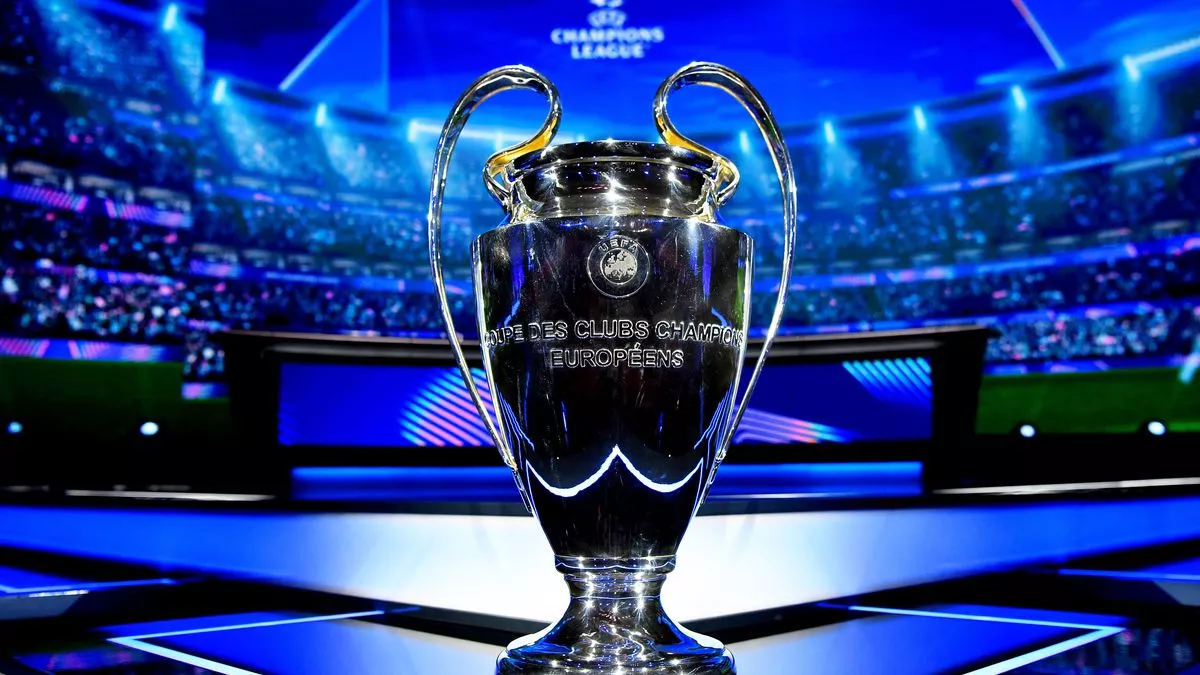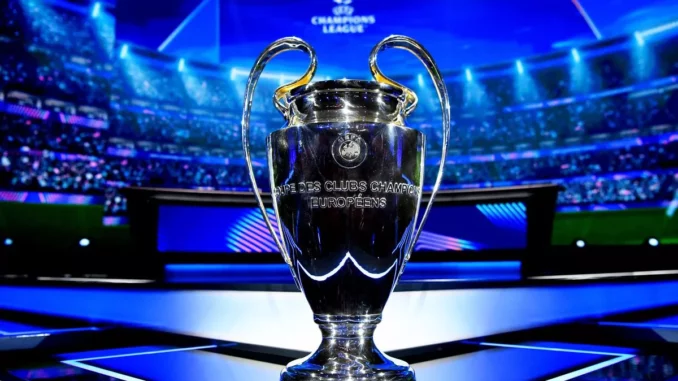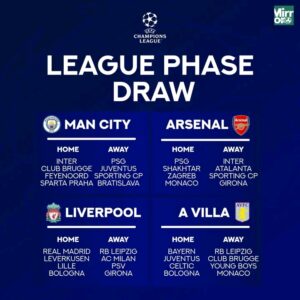

The Champions League is back and it’s had a facelift, expanding to 36 teams in the main competition and adding four more matches for some clubs.
The first round of games will be played on Tuesday 17 and Wednesday 18 September.
Manchester City and Liverpool are in Pot 1 for the draw, while Arsenal are in Pot 2 and Aston Villa are in Pot 4.
Find out all the Premier League clubs’ fixtures below – and you can find the full draw on Uefa’s website here. It’s worth noting these matches are not necessarily in order and the dates and kick-off times are still to be determined.
Man City’s Champions League fixtures
English champions City will face debutants Slovan Bratislava but also have tantalising trips to Paris and Turin ahead.
Inter Milan (H)
Paris Saint-Germain (A)
Club Brugge (H)
Juventus (A)
Feyenoord (H)
Sporting CP (A)
Sparta Prague (H)
Slovan Bratislava (A)
Arsenal’s Champions League fixtures
Mikel Arteta can breathe a sigh of relief as aside from a potentially tricky away tie in Milan and hosting PSG, Arsenal could not have asked for a much less daunting line-up. Atalanta, the Europa League champions, will be seen as a banana skin.
Paris Saint-Germain (H)
Inter Milan (A)
Shakhtar Donetsk (H)
Atalanta (A)
Dinamo Zagreb (H)
Sporting CP (A)
Monaco (H)
Girona (A)
Also: West Ham vs Bournemouth 1-0 Highlights | EFL Cup
Liverpool’s Champions League fixtures
Liverpool will be determined for this to be a revenge mission when they face holders Real Madrid after their defeats to them in the 2018 and 2022 finals. Xabi Alonso will also host Arne Slot’s new side as head coach of Bayer Leverkusen.
Real Madrid (H)
RB Leipzig (A)
Bayer Leverkusen (H)
AC Milan (A)
Lille (H)
PSV Eindhoven (A)
Bologna (H)
Girona (A)
Aston Villa’s Champions League fixtures
On their return to the top table for the first time since 1983, Unai Emery’s men will host Bayern Munich, Celtic and Juventus on what are sure to be special nights at Villa Park.
Bayern Munich (H)
RB Leipzig (A)
Juventus (H)
Club Brugge (A)
Celtic (H)
Young Boys (A)
Bologna (H)
Monaco (A)
How the new Champions League “Swiss Model” format works
Remember the traditional Champions League format, the one that everyone liked? That’s gone. It worked too well and was far too easy to understand. Instead, welcome the Swiss Model.
Initially created to match up and rank chess players at large tournaments, the Swiss Model means the Champions League group stage will now rank all 36 teams in the expanded format into one large table. In fact, it’s not even called the group stage any more – it’s the league phase.
The 36 teams have been split into four nine-strong pots based on the Uefa coefficient rankings, with Real Madrid at the top and Stade Brestois holding up the rear.
The Swiss Model explained (Graphic: i)

Now, unlike in previous years, the draw will be done by artificial intelligence rather than pristinely-suited ex-players. It will give every team matches against two clubs from each pot regardless of the pot they are in themselves, meaning there are now eight fixtures rather than six in this initial stage.
The matches will be evenly split into home and away and there will be no repeats, unlike the previous format. Clubs from the same country cannot be drawn against each other, and any team can only play a maximum of two teams from the same nation.
After the league phase, the first eight teams will automatically progress to the last 16, while those in ninth to 24th will play a two-legged knockout round to earn their places.
Teams which finish 25th or below will be eliminated and there is no longer relegation to the Europa League.
From the last 16 the format reverts to a traditional knockout bracket, all the way to the 2025 final at Munich’s Allianz Arena.
CLICK HERE TO COMMENT

